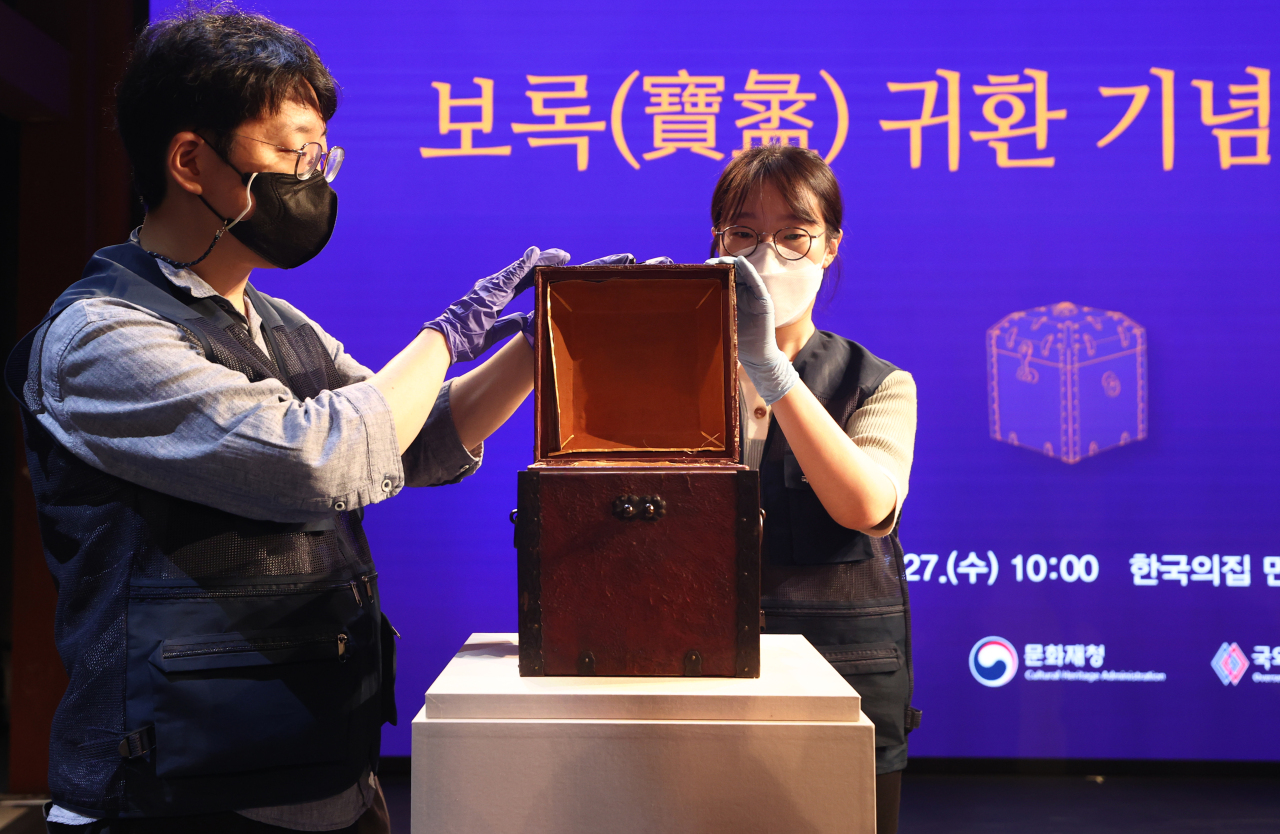 |
Researchers present a returned heritage item, borok, at a press conference held Wednesday at the Korea House in Jung-gu, central Seoul. (Yonhap) |
A box for holding the royal seal called “borok,” estimated to be made after the 1800s, has returned home from the UK, the Overseas Korean Cultural Heritage Foundation announced Wednesday.
The state heritage foundation initially obtained information of the borok last year, which had been in possession of a British corporation. The British company acquired the borok via an auction and was in the process of selling it to an unknown buyer. The item was acquired on July 12, after a series of joint examinations and assessments made by the Cultural Heritage Administration and the OKCHF, through the auspices of Riot Games.
Borok was used for storing a royal seal produced on the occasion of the bestowal of an honorific title or posthumous name for a king or queen.
Usually, a royal seal was placed in an inner case known as a “botong,” and set inside the borok, to be stored at the Jongmyo Shrine or the Oegyujanggak, the Outer Royal Library. Since the seal was not enclosed in the returned borok, additional investigation is necessary to identify its owner, according to the OKCHF.
Borok was crafted steadily across some three hundred years during the Joseon era (1392-1910), using diverse materials such as metal, fiber, and leather, which contributed to the development and diversification of royal crafts.
In the returned case, a turtle-shaped handle is attached in the center of the upper panel. The interior is lined with red silk, and the exterior wrapped with leather and further coated with red lacquer.
Currently, 312 borok and “inrok” from Jongmyo Shrine are housed in the National Palace Museum of Korea. Inrok are boxes that contained seals of the Crown Princes and Princesses. All extant borok were produced from the early 1600s through the reign of Emperor Sunjong (1874 –1926). Given that the exterior edges have been reinforced with metal plates, the item is likely to have been produced after the 1800s.
The restitution marks the sixth heritage item to be supported by Riot Games Korea since 2012. Riot Games, the maker of League of Legends, has donated some 6.87 billion won ($5.2 million) to the CHA’s cultural heritage support project, the largest amount among the CHA’s partnership with private entities.
The returned royal seal case will be unveiled to the public in August, through the exhibition, “Treasures of Ours, Treasured by Others: Journey of Korean Cultural Heritage,” currently being held at the NPMK‘s Special Exhibition Gallery.
By Kim Hae-yeon (
hykim@heraldcorp.com)








![[Weekender] Korea's traditional sauce culture gains global recognition](http://res.heraldm.com/phpwas/restmb_idxmake.php?idx=644&simg=/content/image/2024/11/21/20241121050153_0.jpg)